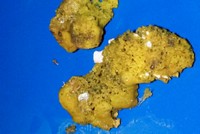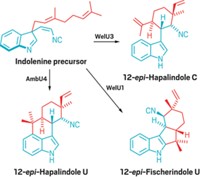Advertisement
Grab your lab coat. Let's get started
Welcome!
Welcome!
Create an account below to get 6 C&EN articles per month, receive newsletters and more - all free.
It seems this is your first time logging in online. Please enter the following information to continue.
As an ACS member you automatically get access to this site. All we need is few more details to create your reading experience.
Not you? Sign in with a different account.
Not you? Sign in with a different account.
ERROR 1
ERROR 1
ERROR 2
ERROR 2
ERROR 2
ERROR 2
ERROR 2
Password and Confirm password must match.
If you have an ACS member number, please enter it here so we can link this account to your membership. (optional)
ERROR 2
ACS values your privacy. By submitting your information, you are gaining access to C&EN and subscribing to our weekly newsletter. We use the information you provide to make your reading experience better, and we will never sell your data to third party members.
Synthesis
Scaling Up The Axinellamines
by Bethany Halford
August 29, 2011
| A version of this story appeared in
Volume 89, Issue 35
A quicker, more efficient, and stereocontrolled route to a key intermediate in the total syntheses of axinellamines, massadines, and palau’amine has been developed. The route provides access to gram quantities of the natural products—amounts needed to conduct follow-up studies on their biological properties. Scripps Research Institute’s Phil S. Baran recognized a central inefficiency in his group’s syntheses of the aforementioned compounds: All went through a common spiroaminoketone intermediate, which was synthesized in 1% overall yield via a 20-step sequence that proceeded without stereocontrol at the spiro carbon. Along with coworkersShun Su and Rodrigo A. Rodriguez, Baran was able to shorten this route to just eight steps with 13% overall yield and stereocontrol at the spiro carbon (





Join the conversation
Contact the reporter
Submit a Letter to the Editor for publication
Engage with us on Twitter